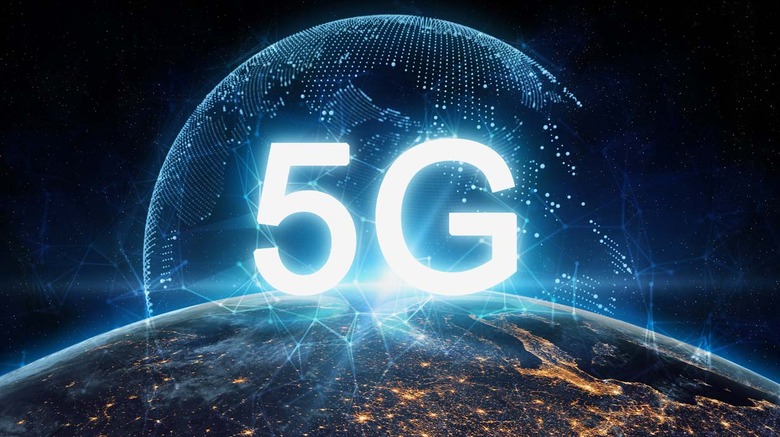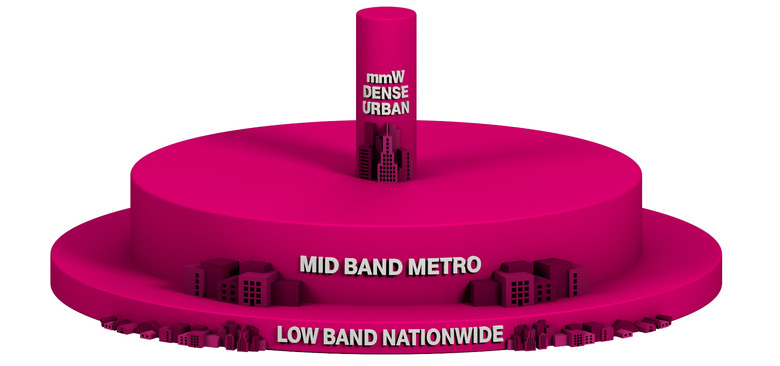What Is 5G? Everything You Need To Know About The Next-Gen Network
5G is well and truly here. After years of promises and hype, you now likely spend at least some of the time connected to a 5G network. But what does that mean? The rollout of 5G has been confusing, to say the least. That, however, is exactly why we've put together this guide — to help you learn everything you need to know about 5G and the rollout of 5G networks.
5G began rolling out to the public a few years ago, both in terms of the actual network, and in terms of smartphone support for those networks. But that doesn't make the tech necessarily any less confusing. Curious about 5G and what exactly it has to offer? Here's everything you need to know about 5G.
What is 5G?
5G basically refers to the next generation of network technology and comes after 4G's launch in 2009, and LTE's launch in 2010. It first started rolling out to the public in early 2019, however it was until T-Mobile launched the first "nationwide 5G" network in late 2019 that the technology started becoming more widely available. 5G comes in a few different forms, which we'll get into a little later.
Why is 5G better?
Well, that's a bit of a complicated question. Right now, 5G is only sometimes better than what you'll get on a solid 4G LTE network. As time goes on, however, faster 5G networks will likely start to become more available.
Once that happens, your mobile internet connections will start to get a whole lot faster. You'll see download speeds of up to a few gigabits per second in some places, especially in densely populated areas like large cities, stadiums, and so on. The other big advantage to 5G is that it has far less latency than 4G networks. Latency has to do with how responsive a network is. Things like game streaming require as little latency as possible. Gaming, however, is entertainment — life or death situations like connected cars will require as little latency as possible too.
What are the different types of 5G?
5G isn't one single technology — it's a collection of technologies. There are a few different forms of 5G, and they each have their own pros and cons.
These pros and cons largely have to do with how radio frequencies work. Lower frequencies can travel longer distances and penetrate obstacles better, but aren't as fast as higher frequencies. Higher frequencies, on the other hand, can support much faster data speeds, but can't really travel far, and can't make their way through obstacles as well.
Here's a rundown of the different kinds of 5G.
Low-band (Sub-6)
Low-band networks were the first 5G networks in the U.S. to truly reach customers. Carriers like Verizon and AT&T had started deploying high-band connections in large cities, but when T-Mobile launched its nationwide low-band network in late 2019, it meant that customers all around the country could use 5G — even if it wasn't really that fast.
Low-band frequencies are considered to be those less than 2GHz. These frequencies were used for previous-generation cellular networks, as well as cable networks. They can travel long distances (meaning that you can connect to a cell tower that's sometimes miles away), but aren't all that fast.
Originally, "5G" was launched on the same frequencies as older cellular networks, and as a result, 5G still isn't much faster than 4G LTE was — though it is getting better.
Mid-band
Mid-band may well be the best way to deploy 5G, at least in a way that can actually reach a large number of customers. 5G frequencies span from around 2GHz to 10GHz, and are many of the same frequencies used in 4G networks and Wi-Fi networks.
Mid-band frequencies can't travel as far as low-band networks, but they can carry much more data. Not only that, but while they can't travel quite as far, they can still travel up to around half a mile. That means that unlike high-band networks, you don't need a cell at every street corner.
Mid-band networks aren't very widely available just yet, but both Verizon and AT&T are set to start rolling out mid-band networks in the next month or so.
High-band (mmWave)
High-band frequencies, often referred to as mmWave frequencies, are what you might think of when you think of 5G. These frequencies are extremely fast, and can deliver download speeds of up to a few gigabits per second. Only one problem — because they're such high frequencies, they can't really travel, so in order to get a decent mmWave network up and running, carriers have to deploy cells all around a city. It will be a long time before we get to that point, and even when we do the tech may only be available in larger cities.
The different carriers have different names for their mmWave networks. AT&T has 5G+, while T-Mobile has its "Ultra Capacity" network, and Verizon uses the term "ultra wideband."
MmWave frequencies are those above 10GHz.
What kinds of things can you do on 5G?
All kinds of things! Initial ideas for what we might be able to do with super-fast 5G networks include game-streaming on the go, creating networks of connected cars, and using virtual and augmented reality tech out in the world. But those kinds of technologies are still in their infancy.
Perhaps more exciting about a next-gen network is what we don't yet know. When 4G networks started popping up, it enabled the social media networks, video-streaming, and more — use-cases that we may not have even thought about before 4G was available. We're likely to see all kinds of innovative technologies that take advantage of newer networks.
Where is 5G available right now?
All three major U.S. carriers — AT&T, Verizon, and T-Mobile — have deployed their so-called "nationwide 5G" networks. That means that you can use it in even relatively rural areas, at least when it comes to low-band 5G.
Over time, we're going to see more mid-band networks that offer better coverage than mmWave, and higher speeds than Sub-6 networks. Those will likely start deploying in the next month or so.
MmWave networks are much less available. The three big carriers have launched at least some mmWave coverage in most U.S. cities, but even in those cities you'll need to be in the right area to connect.
Does my phone work with 5G?
When 5G started rolling out, only the highest-end phones supported it — and even then, they didn't necessarily support all kinds of 5G. Over time, 5G modems have started appearing in lower-end phones, and if you buy a new phone in 2022, chances are it'll support 5G of some kind. All new iPhone models support 5G, and most high-end Android phones do too.
What is home 5G?
Home 5G has more to do with how home internet is brought into your home than the actual way that your devices connect. Your current home internet connection is likely brought into your home through a cable. With home 5G, that cable is replaced with a device that accesses local 5G networks, and kind of converts that into a Wi-Fi network for your home. Depending on how good your local internet service providers are, and whether or not you have a decent 5G network nearby, this could either be better or worse than what you already have.
Is 5G safe?
Yes. Every time a new cellular technology rolls out, people question its safety. But as was the case with all previous generations of cellular networks, 5G is safe.
There are two kinds of radiation — ionizing and non-ionizing. Ionizing waves are the kinds of waves that you find in x-rays. If you were exposed to them regularly, they might prove unsafe. But radio waves like those used in 5G are well within the limits of non-ionizing waves, and there is no evidence to suggest that they're at all unsafe.

